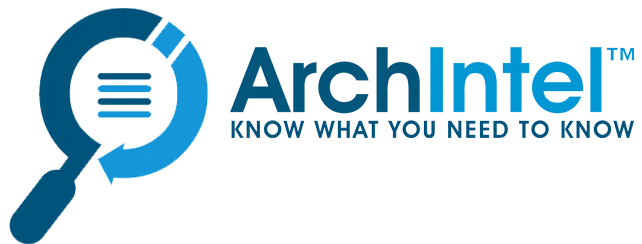Leslie Mauger, director of Pricing, Strategy and Intelligence at Peraton, recently spoke with ArchIntel regarding how she measures success within competitive intelligence, how to draft competitive intelligence reports and some of the lessons and challenges she’s learned throughout her career in the sector. She also discussed how technology has shifted the competitive intelligence marketplace and how to provide stakeholders with valuable, actionable insights.
“We provide support across the board, from competitive intelligence to customer insight inquiries and market research requests. I equate our work to a gyroscope, which is constantly shifting and changing on multiple axes.
The challenge is to continually balance between the strategic and the tactical, the proactive and reactive, the near and long-term, which requires agility. We have to be able to shift and move based on priorities and a dynamic environment.”
ArchIntel: What are the larger lessons you’ve learned throughout your career in competitive intelligence?
“The biggest lesson I’ve learned is to keep an open mind and never let either stakeholders or personal experiences bias the research effort. You have to work through the research from beginning to end, and take it in the logical direction as a practitioner.
It’s a disservice to affirmatively answer the questions in the way that a stakeholder wants to hear. It’s important to be independent and objective in those responses in a way that informs their insight and provides actionable intelligence rather than trying to find a desirable answer.”
ArchIntel: How do you develop a competitive intelligence strategy within an organization?
“With Peraton being a relatively new organization, coming out of divestiture action, we had to build the capability within. Since our launch in 2017, we’ve focused on establishing the infrastructure, such as workflow or automating requests. A lot more of our time, effort and resources were devoted initially to near term tactical and reactive inquiries.
In terms of our research agenda, as we’ve grown and developed and become more mature, we are starting to shift in focus to address more proactive research for strategic growth campaigns and corporate growth initiatives, like mergers and acquisitions (M&A) topics and strategic partnerships.
We’re trying to create a collaborative dialogue as we continue to develop new strategies and offerings. From a strategic perspective, we’re looking at new opportunities that shape and influence the corporate growth trajectory. Through our efforts, we identify new ways to create a proactive research agenda with key themes that drive opportunities for consideration and, ultimately, growth.
It’s a two-way channel of communication that works best for us, where we can present our ideas, look at the competitive landscape and then take additional direction from our team based on specific targeted opportunities to really understand the competitive solution and bid posture for a particular opportunity.
We feed actionable intelligence that summarizes the content to enable those decisions. We also gain human intelligence through our teams via their engagement and interaction with clients and customers, as well as with other companies across the industry market space, which can shape the direction of our research.”
ArchIntel: How do you measure success within competitive intelligence?
“Success comes from the ability of our stakeholders to recognize the value of the intelligence information we provide, and they come back and ask for more. For the build up of the infrastructure, for example, we created automated work requests, where they could feed that information into the system and we could draft responses.

In 2019, we responded to about 75 inquiries ranging in size, scope and complexity. Coming into 2020, we’ve been a victim of our own success. We’ve had so much interest and success from stakeholders that we will double the workload.
That’s been the most successful outcome from a corporate perspective. That recognition and insight as stakeholders conduct budget planning has emphasized how we’ve successfully transitioned from having a useful capability to becoming an essential function within the company infrastructure.
At the end of the day, success is really results oriented. We focus on input and key opportunities that positively shape and influence our strategy over time. For example, one of the areas that we directly support is the development of competitor solutions to advance price to win exercises.
We partner with solution architects, pricing analysts and strategists to develop a competitor profile for our executives and capture leadership that shapes their strategy and pursuit of an opportunity, which ultimately will result in a win. After we submit the proposals, we then have a good indication of success.”
ArchIntel: How has technology shifted the role of the competitive intelligence process?
“Technology, for me, has been an enabler for the process and the work that we do. Around ten years ago, there were multiple sources of market and competitive intelligence.
You had competing database sources and input, so it provided a nice opportunity to triangulate data. We went through a period of time where it became more challenging to find independent data points to validate information and insights.
I like to find data in more than one place to strengthen the value offering that I bring to the stakeholders in our organization, so that was frustrating. I think we’ve recently seen the advent of more entrants from a technology perspective into the CI market space.
The majority of them have a baseline feed from the federal procurement database system, which each organizes and sorts in a way that is either easier to access or includes some kind of visualization that helps us better convey those findings to our target audience.”
ArchIntel: What are the important components of a competitive intelligence report?
“Anytime we develop a report or a presentation, we first want to make sure that it is provided in a timely manner. We work closely with our stakeholders to set realistic deadlines in terms of our capabilities and how quickly we can do it for them.
 Then it’s a matter of the wealth of information available. There is a lot of data. But the important thing is to engage with those stakeholders to understand the research query. For me personally, I look to read between the lines to uncover the context in which they’re asking those questions.
Then it’s a matter of the wealth of information available. There is a lot of data. But the important thing is to engage with those stakeholders to understand the research query. For me personally, I look to read between the lines to uncover the context in which they’re asking those questions.
I’m always looking for the direct answer to the question they’ve asked. But I also want to provide enough supplemental insights and information to build context around our claims, so that I can take that information, then convert it to intelligence, so they have actionable insights to make accurate decisions.
That’s one of my greatest passions, making connections between data and insights. My background is in education, training and instructional design. So this career path takes me back to my roots. I taught first grade; I worked with students on problem solving and connecting the dots on an ongoing basis.
Now, I like to do that for our stakeholders. I want to connect the dots in a meaningful way, so that they see a whole picture and not just a single data point or plot on a page.”


